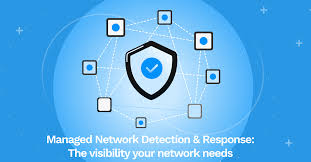Importance of Network Detection and Response
Organizations must prioritize robust cybersecurity strategies in an era when cyber threats and data breaches are becoming increasingly sophisticated. Network detection and response (NDR) is a crucial aspect of modern cybersecurity. NDR tools are essential for identifying, mitigating, and responding to real-time threats, thus ensuring the security of our digital environments. Implementing network detection and response allows businesses to maintain the integrity of their systems and protect sensitive data. With the number of cyber-attacks rising annually, the necessity for reliable NDR systems has never been more significant. These systems are the first line of defense, capable of promptly detecting anomalies and suspicious activities, which helps mitigate risks before they can cause substantial harm to the organization.
Key Components of Network Detection and Response
Network Detection and Response (NDR) strategies are essential for ensuring comprehensive security coverage. Real-time monitoring allows for immediately detecting anomalies or suspicious behaviors, minimizing potential damage. Global threat intelligence integration enhances the system’s ability to recognize and respond to known and emerging threats. Advanced behavior analytics help identify patterns and trends indicating malicious activities, flagging potential security issues quickly. Automated responses facilitate immediate mitigation of threats, reducing vulnerability and preventing further escalation. These components form the backbone of an effective NDR strategy, allowing IT teams to focus on complex security issues requiring human intervention. By integrating these components, organizations can develop a more proactive security posture and mitigate potential security incidents.
Best Practices for Implementing Network Detection and Response
Network Detection and Response (NDR) can be improved by following best practices. Regular security assessments help identify vulnerabilities, keeping security measures relevant to the evolving threat landscape. Machine learning algorithms can analyze vast amounts of data at a faster and more accurate rate than humans. Integration with SIEM systems ensures better data correlation and threat management, creating a unified security platform. Cross-functional collaboration between IT and security teams ensures effective implementation and maintenance of security measures. Adhering to these best practices can help organizations enhance their NDR capabilities and establish a more resilient security framework.
Tools and Technologies for Effective Network Detection
Network detection and response are crucial for organizations. Tools like Network Traffic Analysis Tools help identify patterns and potential threats by monitoring and analyzing network traffic. These tools provide real-time insights into network activities, allowing for the detection of security breaches. Endpoint Detection Systems provide visibility into endpoint activities, enhancing security by identifying and responding to threats targeting individual devices. AI-powered solutions are increasingly used in cybersecurity to analyze large datasets and quickly identify complex threats. These solutions use advanced algorithms to predict and mitigate potential cyberattacks, making them essential in modern cybersecurity strategies. By leveraging these tools and technologies, organizations can significantly improve their network detection and response capabilities, ensuring robust protection against cyber threats.
Case Studies of Successful Implementation
As demonstrated by case studies, NDR systems have been influential in the banking industry, safeguarding consumer data and meeting regulatory standards. These systems have assisted in identifying and reducing risks in real time to secure consumer information. NDR has been applied in the healthcare sector to safeguard patient information and preserve the privacy of medical records. These case studies illustrate the practical advantages of NDR solutions in strengthening security by showcasing their adaptability and efficacy across various sectors.
Future Trends in Network Detection and Response
As cyber threats evolve, so will the technologies and strategies used in network detection and response. Predictive analytics will be crucial in anticipating and mitigating future threats by analyzing historical data and identifying patterns. Extended Detection and Response (XDR) platforms will offer integrated and comprehensive threat detection and response capabilities, providing better protection against complex cyber threats. Enhanced threat intelligence capabilities will provide deeper insights and more accurate detection, helping organizations avoid emerging risks. By staying informed about these trends and proactively adapting their strategies, organizations can strengthen their defenses against an ever-changing threat landscape and ensure the continued security of their networks.
Conclusion
Network Detection and Response (NDR) strategies are crucial in today’s evolving cyber threat landscape. These strategies involve real-time monitoring, global threat intelligence integration, advanced behavior analytics, and automated responses to protect digital environments. Adhering to best practices, such as regular security assessments, machine learning algorithms, SIEM integration, and cross-functional collaboration, enhances NDR capabilities. Advanced tools and technologies, such as network traffic analysis, endpoint detection systems, and AI-powered solutions, enable swift and effective threat detection and response. Successful implementation of NDR strategies in industries like finance and healthcare demonstrates their versatility and effectiveness. As future trends emerge, organizations must remain adaptable and forward-thinking. A well-rounded NDR strategy is essential for organizations to protect themselves against sophisticated cyber threats. By continuously evolving approaches and staying updated with technological advancements, businesses can ensure robust defense mechanisms and maintain network security and resilience.


